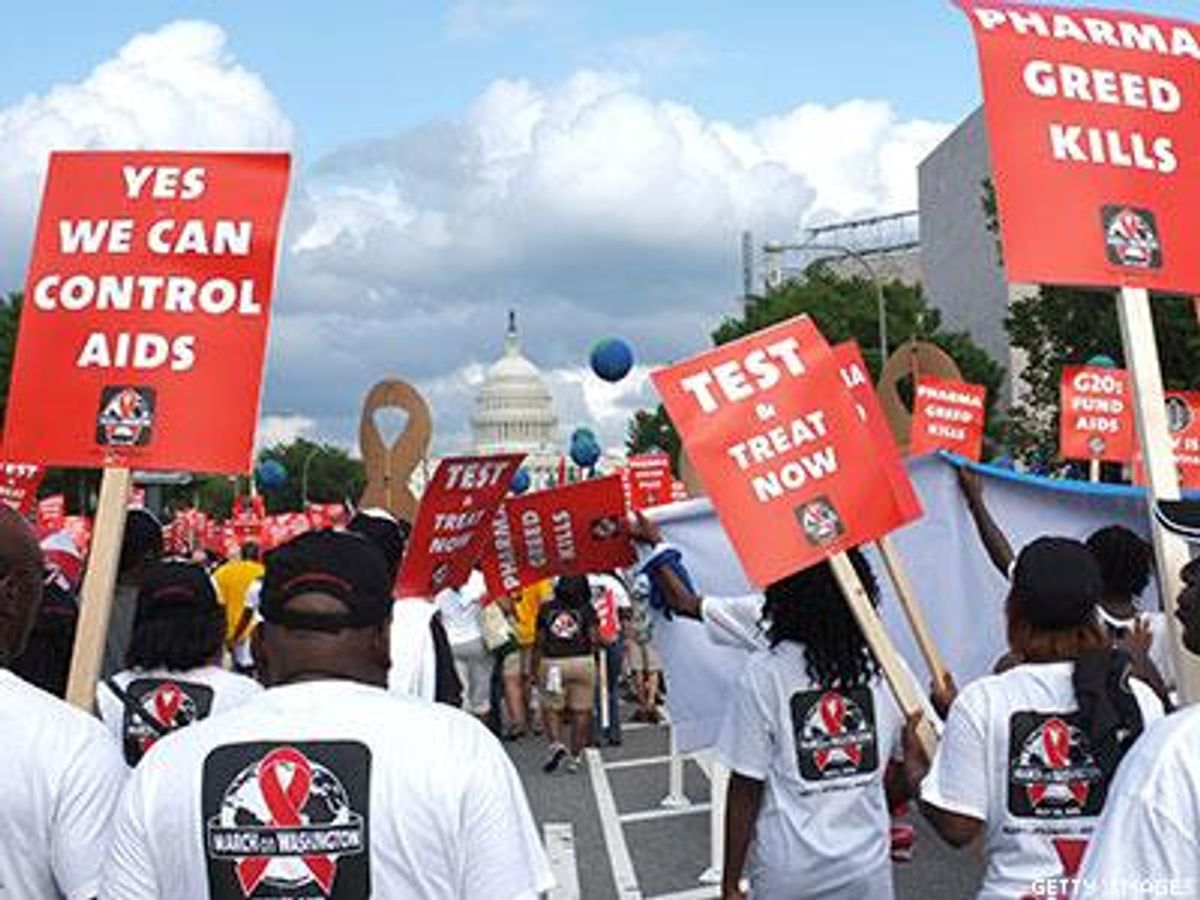
The stats on reducing HIV in the United States have barely changed in the last 15 years, and in some areas, it's gotten worse. It's time for a reality check.
September 26 2014 6:01 AM EST
May 26 2023 2:17 PM EST
By continuing to use our site, you agree to our Private Policy and Terms of Use.

This Saturday will be the sixth annual National Gay Men's HIV/AIDS Awareness Day, and for the first time in our history, the White House will host a meeting focused on HIV among gay and bisexual men the day before. For many, the sentence above is enough for them to tune out, stop reading, and move along -- it's not their issue, not their world, not their concern. And while "others" can often make it easy to turn your back, the reality always comes around to hit us in the face.
The reality is that today, in the United States, more than 1.1 million Americans live with HIV -- basically 1 out of every 300 Americans. Each year, between 45,000 and 50,000 new infections occur, a fact that has not changed for almost 15 years. Gay and bisexual men account for the vast majority of past and current infections, and transgender women face the highest rate of HIV infection among all populations. However, epidemics by their nature cross lines. So while we hope you read on because you realize LGBTQ individuals are part of your family, friends, colleagues, and community; at a minimum we hope you'll read on because allowing an epidemic to go unchecked in any community puts all communities at risk.
The last four years have presented new opportunity to end the HIV/AIDS epidemic within the United States. Research has shown the clear effectiveness of treatment in both extending the life of those infected and stopping new transmissions. The Food and Drug Administration has approved a daily pill that can be used to help prevent HIV infection among the most at risk, and our country has a clearer understanding of where we stand in getting people to know their status and move toward treatment. Add to these scenarios the implementation of health reform -- and it is clear we have the tools and understanding to end this epidemic.
Yet today, for some populations, this new reality seems a world away. In 2014 the Centers for Disease Control and Prevention reported tha, young gay and bisexual men, particularly young gay/bi-men of color, saw a doubling of HIV infections over the past decade while all other populations experienced a decrease. This, matched with the reality that over 50 percent of all individuals living with HIV in the U.S. are gay, bisexual, or other men who have sex with men and that 64 percent of all new infections each year are among this group make it clear that our country, its public health system, and our communities have failed to address the challenge of HIV among gay and bisexual men and transgender women head on.
Twenty years ago the two of us were both working on social justice issues and programs focused on lesbian, gay, bisexual, and transgender youth, Rea at the national level and Michael in the Twin Cities. Over the following years that work brought us together as colleagues, friends, and allies. In fact, when Michael decided to push further out of the closet on his HIV status with a tattoo showing "HIV+" on his calf, we were there together, holding hands -- knowing that it would take the strength of millions to see an end to the epidemic.
Since that time, we've watched seismic changes in our country as it relates to lesbian, gay, bisexual, transgender, and queer individuals. The landscape is changing for the LGBTQ community, from the right to marry to the right to serve. We're making progress on access to trans-inclusive health policies and seeing gay-straight alliances become a standard in many schools. We're seeing more and more employers adopt nondiscrimination policies that are inclusive of sexual orientation and gender identity, and we're winning fights for our rights in the courts at both state and federal levels.
Yet, the impact of HIV, which at one time helped to mobilize a movement and energized a response among LGBTQ people, remains largely unchanged in scale and scope despite the reality of new understandings, tools, and solutions. And it's not just general society that has lost interest, but at times, it feels like the focus has even fallen among LGBTQ Americans.
While the headlines on HIV have faded over the years and the understanding of HIV among most Americans is stuck in the 1990s, the possibility of a new reality is brighter than ever.
So as we mark National Gay Men's HIV/AIDS Awareness Day, we urge all communities, rural and urban, straight and gay, communities of color, those struggling for resources, and even those with immense privilege, to dedicate themselves to taking action and engaging in dialogue that moves us closer to the end of HIV. We need health care to be more responsive and inclusive of LGBT concerns, communities to recognize LGBT identity cuts across all identities, and society to renew its commitment on ending the HIV epidemic. This won't be easy. We must empower the LGBT community to grapple with our own stigma and fear related to HIV; encourage individuals to know their status, seek treatment if infected, and double down on prevention if not.
Together, with a real focus on homophobia, racism and working with communities of those most impacted, we can end this epidemic at last.
REA CAREY is the executive director of the National Gay And Lesbian Task Force.
MICHAEL KAPLAN is the president and CEO of AIDS United.